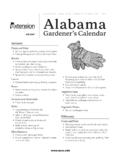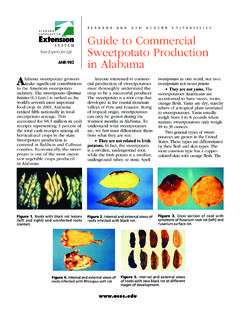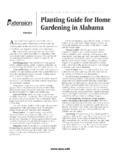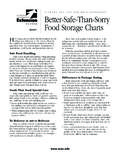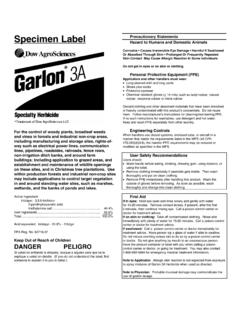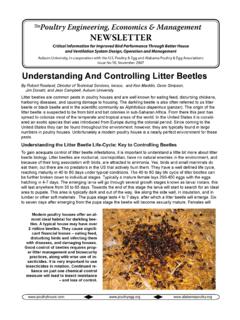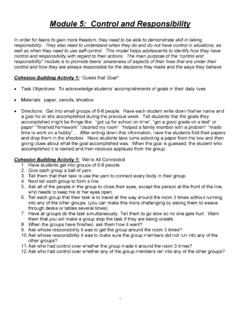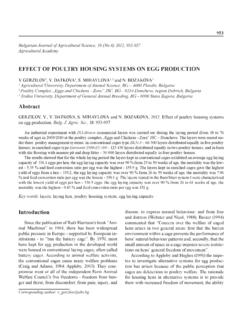Transcription of Key Water Factors for Broiler Production - ACES.edu
1 Providing adequate, good-quality Water is critical for top Broiler performance. The following is a basics outline of the most important Water Factors in poultry Production . This information is essential in planning anew house or complex. We also urge growers to evaluate their existing facilities in light of this information,since Water -related problems that may not be obvious to the grower may be limiting Production or bird perfor-mance. The key Water requirements for Broiler Production fall under three headings:1. An adequate Water supply, typically from a well or Good quality Water , suitable for birds to drink and/or for use in evaporative Properly sized and installed pumps, pipes and other equipment to get the Water to the houses and an Adequate Water SupplyAdequacy of a Water supply is evaluated in terms of how many gallons per minute(gpm) it can deliver on a sustained basis.
2 A typical 500-foot Broiler house requiresabout 2 gpm for drinking Water , so a 10-house complex would require a 20-gpm watersupply, just for drinking Water for the birds. For comparison, a well for a single-familyresidence is usually judged to be adequate if it can deliver around 4-5 cooling systems, using either foggers or pads, typically require about 8 gpm per house, whichwill up the total Water requirement per house to about 10 gpm. Recirculating pad systems are more efficientin Water use than non-recirculating types, in that Water not evaporated is recycled and not lost. However,with either type system, almost all the Water will be evaporated into the air going into the house during peakhot weather demand times, so the design gpm requirement will be the same no matter which type evaporativecooling system is an adequate and reliable Water supply is so important that many poultrycompanies require that two independent supply sources be available, in case onefails.
3 Water adequacy is especially important for modern Broiler houses becausepeak Water usage times come during hot weather. If the supply is not adequate, thecooling will be poor and/or the birds will not get enough drinking Water either ofwhich can be disastrous. For much of the year, when cooling is not needed, thewater demand will be lower but the Water supply for the house or houses must becapable of supplying adequate Water to meet the hot-weather demand. Growersshould consult system manufacturers and a design engineer to get more accurate information for all poultry farms draw Water from wells. Surface Water resources suchas lakes and streams are not used because they require much more elaboratefiltering and other treatment to ensure adequate Water quality.
4 They also tend tobe more variable, and at lower levels during hot-weather peak demand amount of Water that can be pumped from wells varies tremendouslyfrom one area to another, and even within the same county. In Alabama, anusually Water -rich state, wells in the northern part of the state cannot be ex-pected to yield more than 10 gpm. In large areas of South Alabama, on the other hand, wells can be expectedto yield 150 gpm and above. However, since geologic Water -bearing formations can vary even from farm tofarm or on the same farm, growers planning a new complex should consult the state geologic survey, localwell drillers, and a consulting Water Factors for Broiler ProductionAlabama Poultry Engineering and EconomicsNEWSLETTERTheAuburn UniversityNo 7.
5 September 2000 Feature articleModern broilerhouses typicallyneed a watersupply deliveringabout 10 gpmWell yields varytremendously fromone area to another,within the samecounty, or even on thesame farmsteadWater is so impor-tant that manycompanies requiretwo independentsupply sources, incase one failsCheck out Auburn University on the Web at , eitherbetween flocks orcontinuously, may beneeded to cope withiron or coliform bac-teria contaminationWater may look andtaste okay, but qualityis impossible to judgeadequately except withlaboratory testingProper well sitingand constructionare critical inpreventing pollut-ants from enteringthe Water supplyEnsuring Adequate Water QualityWhen Water looks clear and tastes okay, Water quality is easy to take for granted.
6 However, growers must beaware that Water quality is impossible to judge adequately except with laboratory testing. Field tests haveconclusively shown that unobservable differences in Water quality, from farm to farm and even from one wellto another within a complex, can result in significant differences in bird performance. On one farm, for ex-ample, when one of two adjacent houses was switched to a newly drilled well, the succeeding flocks grown inthat house did not perform as expected. When the house was reconnected to the old well, flock performancewent back to normal. Testing showed that Water from the new well had higher concentrations of sodium andsulfate. The Water quality Factors to be aware of include:1.
7 Bacteria, especially coliform bacteria2. Dissolved solids (can be organic or inorganic, such as metals, usuallyinvisible to the eye, and can be toxic)3. Suspended solids (called turbidity; organic or inorganic materials in sus-pension, not dissolved, and causing the Water to be cloudy or colored).In addition to bacterial (microbial) contamination, elements that are particularly detrimental to poultry in-clude nutrients (nitrate and nitrite); high concentrations of sodium, chloride, hydrogen sulfide ( sulfur Water ),iron and manganese, and toxic elements such as lead, selenium and arsenic. Industrial chemicals and toxinssuch as are used in or occur as by-products of agricultural pesticides can also be aproblem, and should be tested for.
8 Table 1 on the facing page lists the commonlyaccepted drinking Water quality standards for common Water quality problem in Alabama and the Southeast is excessiron, along with bacteria that feed on the iron and form a reddish brown slime thatclogs filters, drinkers and fogger nozzles. Mild iron bacteria problems can often bedealt with by shock chlorination, which involves a one-time treatment between flocks,injecting a strong chlorine solution into the well and circulating and flushing it throughall pipes in the more severe iron bacteria problems, continuous chlorination is called for,installing a chlorinator to continuously inject chlorine into the Water system. Chlo-rine not only kills bacteria but is an oxidizing agent, meaning it causes mineralssuch as iron and manganese to combine with oxygen, in the process coming outof solution and forming a solid precipitant.
9 Because of this reaction, a sand mediafilter must be installed downstream from the chlorinator to remove the mineralsolids from the Water . Chlorination also prevents other kinds of bacterial contami-nation, and may be needed even if iron and iron bacteria are not present in thewater an Adequate Water Delivery SystemProper well siting and construction are critical. Any new well must be located a safe distance from any presentor future pollutants. Unfortunately, many existing farm wells have been polluted with nitrates, bacteria andother contaminants. New wells should be located at least 100 feet from septic tanks and field lines, pesticide,fertilizer or petroleum storage or handling facilities, and animal or fowl enclosures; and 150 feet from wastelagoons and dead animal burial pits.
10 Note that these are minimum distances, and greater spacings are contamination occurs at a well site, it is usually because Water -borne pollut-ants flow down the inside of the well casing, or around the outside of the casing. Forthis reason, wells should not be sited in low-lying areas subject to flooding or wherewater is likely to accumulate. Well construction is also important. An improperly con-structed well creates a direct conduit between the ground surface and the under-ground Water supply. It is especially important that the upper part of the well be pro-tected by a sanitary seal or cover, and that any space between the casing and thebore hole be grouted with impermeable materials to a depth of at least 10 feet, andpreferably all the way to the Water -bearing formation.
